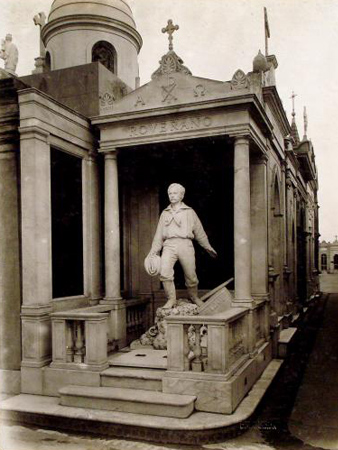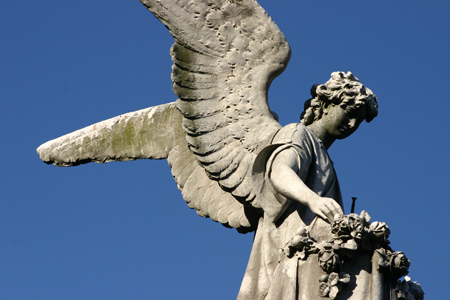
Documenting Recoleta Cemetery in Buenos Aires since 2007
A fourteen-year-old Yiddish-speaking boy, born in a shtetl outside of Kiev, forced to work since the age of ten, is shot during the 1905 Russian revolution. Wounded, he spends six months in jail. Three years later he moves to Argentina to join his brother. Within a few months he leaves the Jewish neighborhood of Once, learns Spanish, finds non-Jewish roommates, and gets a job as a machinist in an Italian-owned metal shop. He frequents the Biblioteca Rusa where he absorbs the vigorous discussions promoting anarchism.
Barely a year after his arrival, this teenager witnesses the mayhem of the 1909 May Day demonstrations. The police fire upon the protesters. Anarchists shoot back. At least five dead and dozens wounded. The days that follow are a week of violent reprisals and protests. Sixty thousand people march to the funerals for those who died on May 1. Riots continue along with demands for the removal of police chief Ramón Falcón.
Tensions continue throughout the year. Our teenager, Simon Radowitzky, closely follows the movements of the police chief. On 14 November 1909, Coronel Falcón and his aide twenty-year-old Juan Alberto Lartigau ride through Recoleta. As their car approaches the corner of Callao and Quintana, a bomb is thrown inside. The explosion follows. Neither man is killed instantly. Their injuries are severe. Both will die before nightfall.
Appropriately, Falcón & Lartigau are buried next to each other in Recoleta Cemetery, both with fantastic monuments. Lartigau has a group of angels watching over his collapsed body in a Pietà-inspired scene. Beneath his name is the date of the bombing with a note that the tomb was paid for by public donations… wrought-iron gates add a nice touch. The Jewish community in Buenos Aires also donated a plaque:
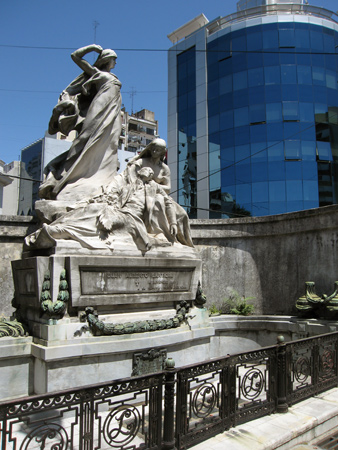
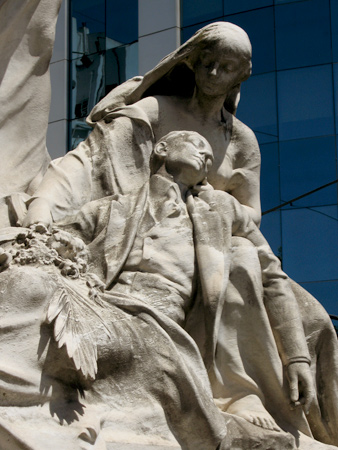
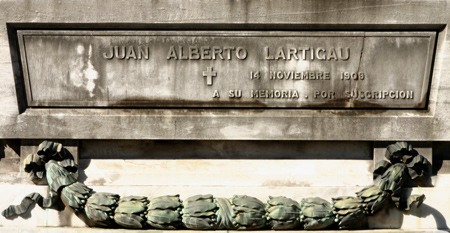
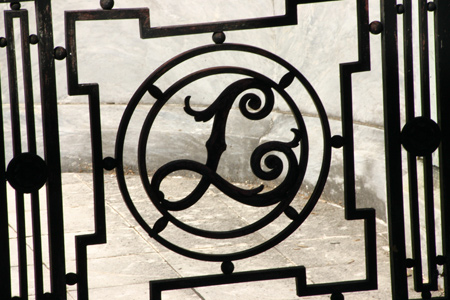
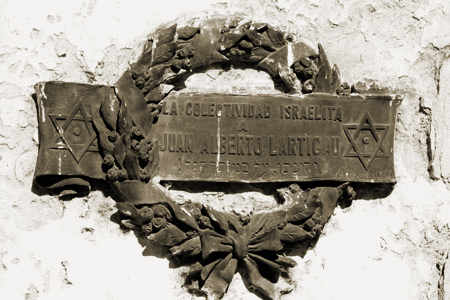
Alongside is the severe vault of Ramón Falcón. He lies sculpted in effigy while someone above fights a Sphinx… half-woman, half-lion, sometimes winged (not in this case). Two robed statues of women in mourning approach Falcón, & the entire monument is covered in plaques:
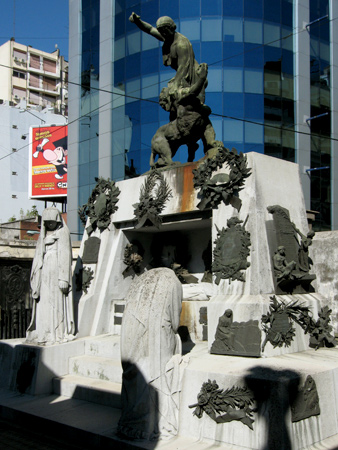
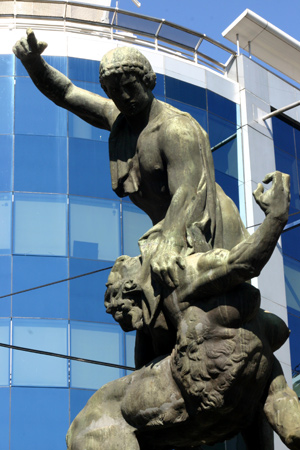
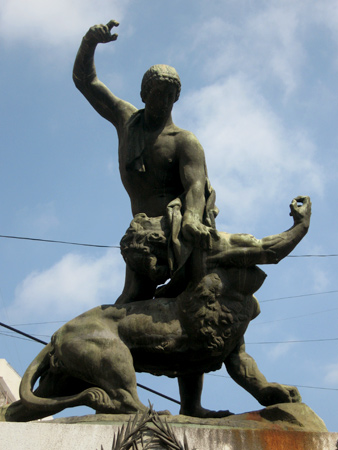
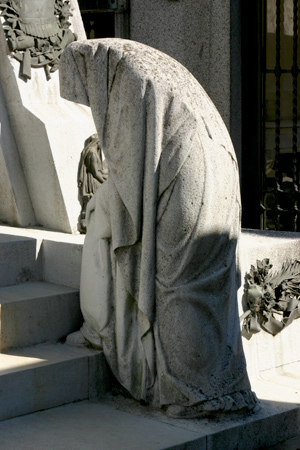
Some text adapted & used with permission by Jeff Barry, author of Buenos Aires: City of Faded Elegance. To discover the fate of Radowitzky, read the remainder of Jeff’s post.
7 Comments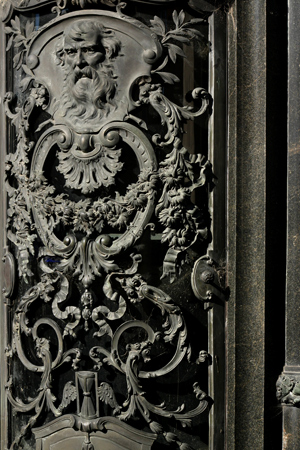
Notoriously difficult to photograph due to its location, this unnamed vault possesses one of the best doors in Recoleta Cemetery… definitely on par with that of David Spinetto. Perhaps not visible given the angle of this picture, the door is actually curved. Amazing.
Update (06 Mar 2009): Last year this vault was purchased & refurbished by the family of Brigadier Juan José Nogueira, who served in the Argentine Air Force. The polished door looks spectacular, & an equally shiny plaque commemorates his participation in the Falkland Island War. It also states that Nogueira passed away on the feast day of the Virgin of Loreto… oddly enough she is the patron saint of aviation in Argentina:
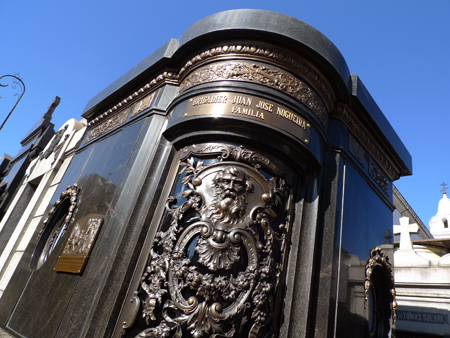
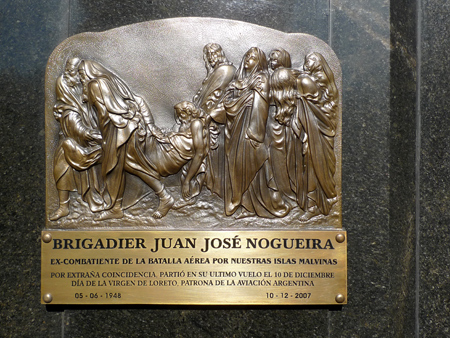
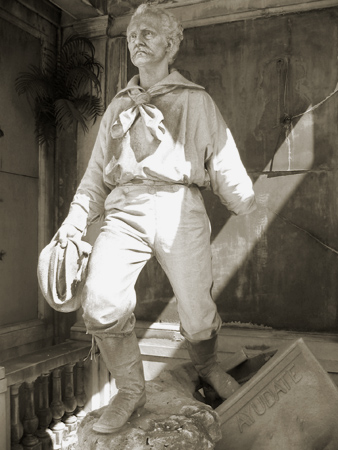
Even though he’s missing an arm, this statue of an Italian immigrant is unique to Recoleta Cemetery. He represents one of the newly arrived in Argentina, stepping off a boat onto dry land. Typical peasant garb of a scarf, pants, & boots make his Italian origins obvious. The short phrase written on the boat provides one final clue: “Ayudate” (Help yourself). It’s a wonderful representation of an immigrant who makes a fresh start in a new country.
The Roveranos came from the region of Genoa, Italy & amassed a small fortune as owners of the now-demolished Confitería del Gas. This famous café in downtown Buenos Aires served customers in the original location of the Café Tortoni. When the Tortoni moved to where it is today, the Roverano family set up their own competing café. In 1882, theirs had the distinction of being the first business in Buenos Aires fitted with electric lamps. Very hi-tech for the time.
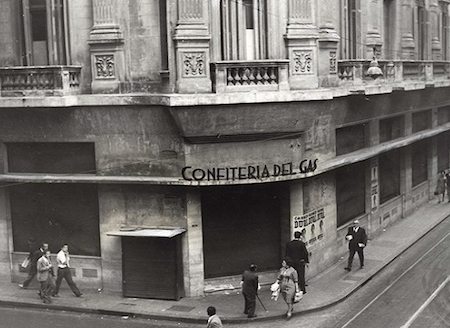
The Roveranos also bought property close to the main square & opened a commercial passageway named after them. Their café may not be around these days, but entering the Pasaje Roverano (directly behind the Cabildo) is like going back to the early 20th-century with an old-time barbershop, beautiful stained glass, & nicely preserved woodwork:
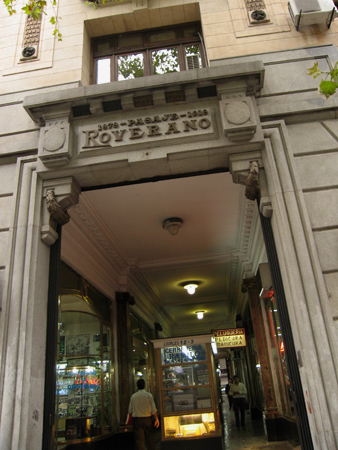
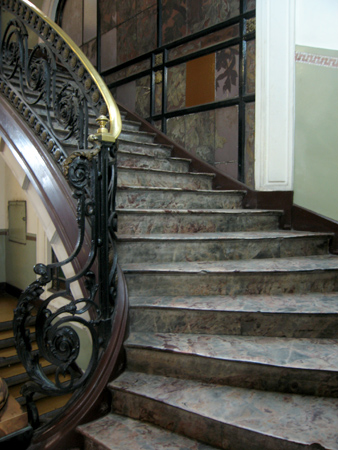
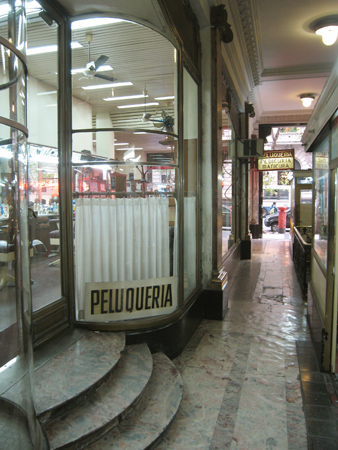
The Roveranos decided to change cemeteries in 1919 so this has been vacant for several decades, yet the ideal that brought them to Argentina remains intact. Supposedly they spent over one million pesos to build the new family vault in Chacarita Cemetery:
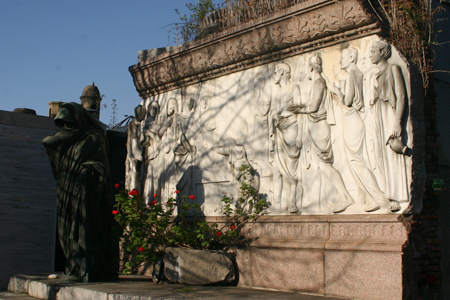
Update (08 Feb 2012): Much of the Colección Witcomb has been made available online, including photo #369 which shows our favorite Italian immigrant with his arm intact:
